
Artas robotic hair restoration
ARTAS robotic hair transplants
The ARTAS® Procedure enables hair restoration physicians to transplant hair without a linear scar. It’s made possible using advanced technology that selectively harvests hair directly from the scalp. You can get a permanent, fuller head of hair without a linear scar.
BENEFITS
Reduced incidence of “shock loss” – see ARTAS Hair Studio. Shock loss can occur from manual creation of recipient site incisions on top of head. Robot reduces that risk.
No linear incision
No linear scar
Increased accuracy of graft placement at proper angles and orientation
Increased graft survival
Increased accuracy of graft harvesting
Faster healing time
Expanding the donor area to include areas remote from the scalp, such as the chest or back
Reduced duration of the procedure
Reduced recovery time



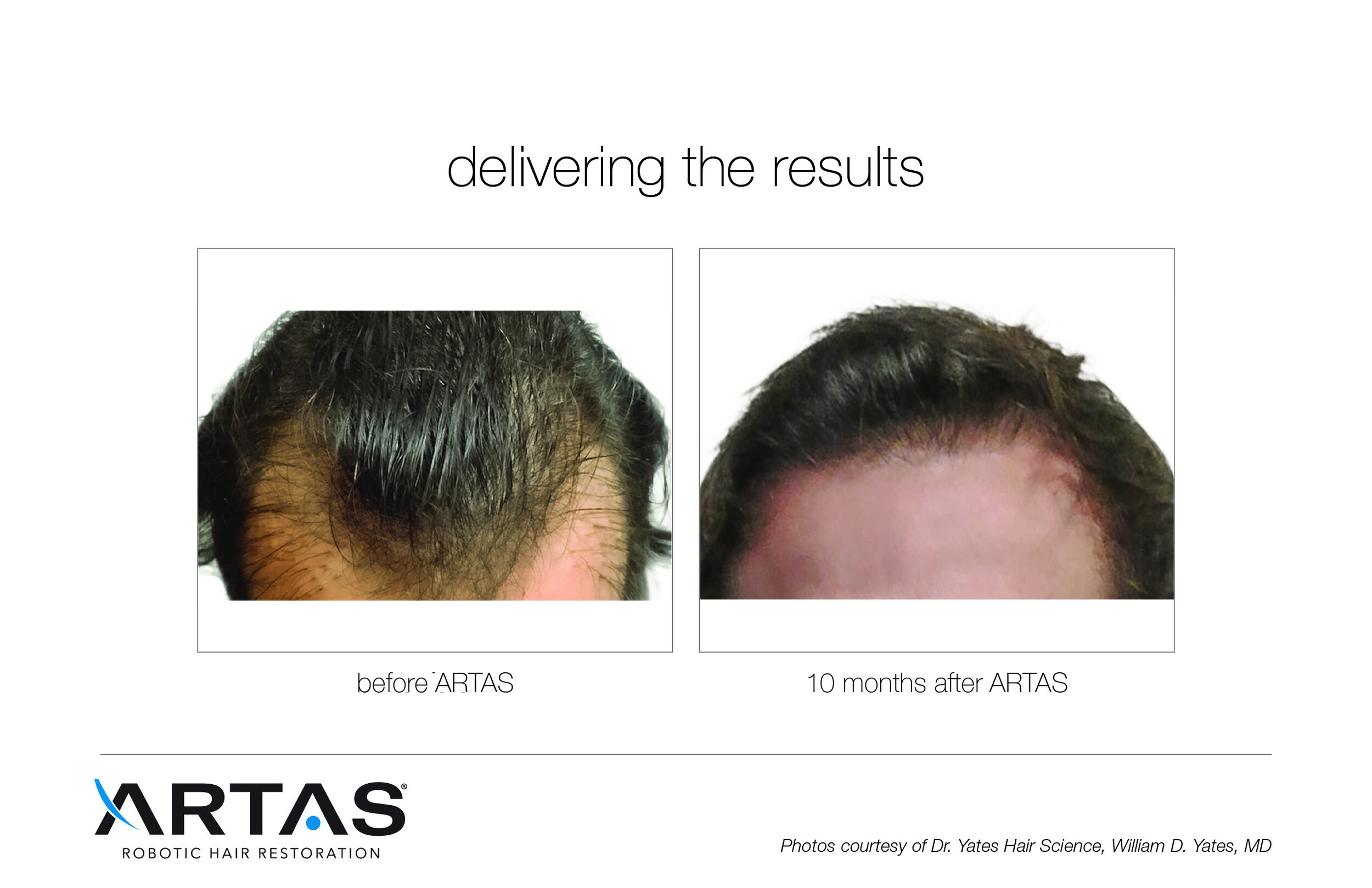
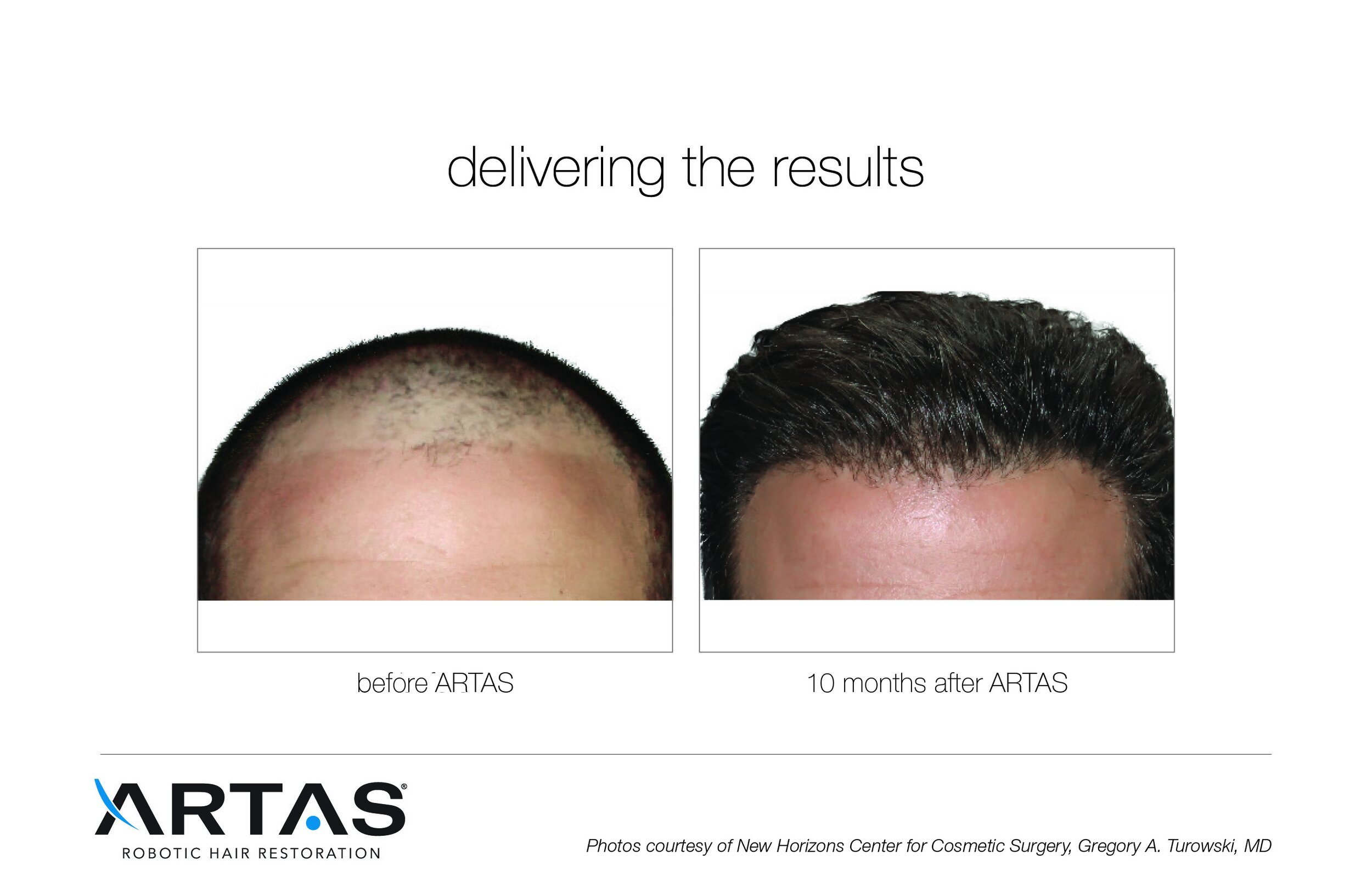


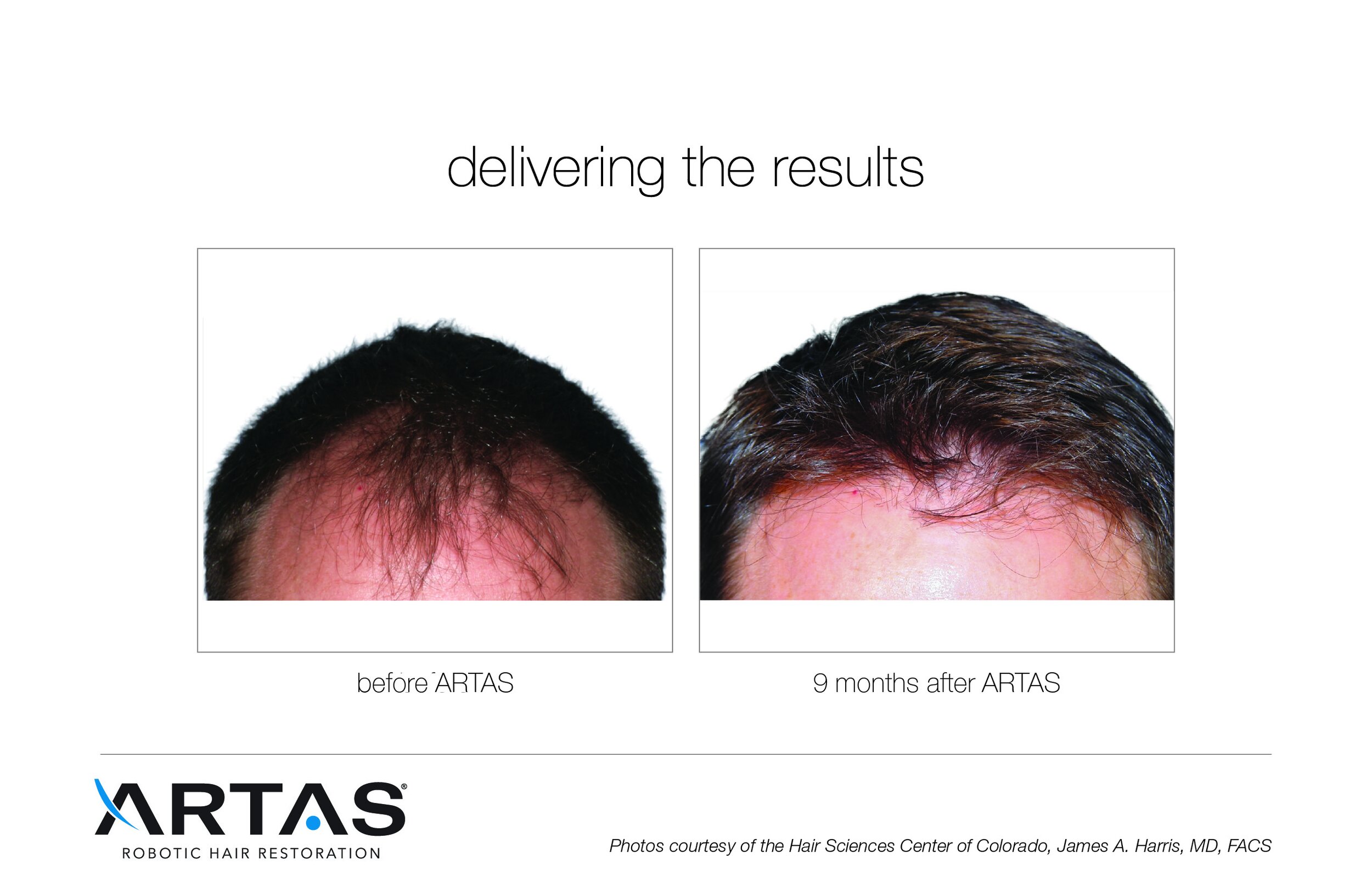
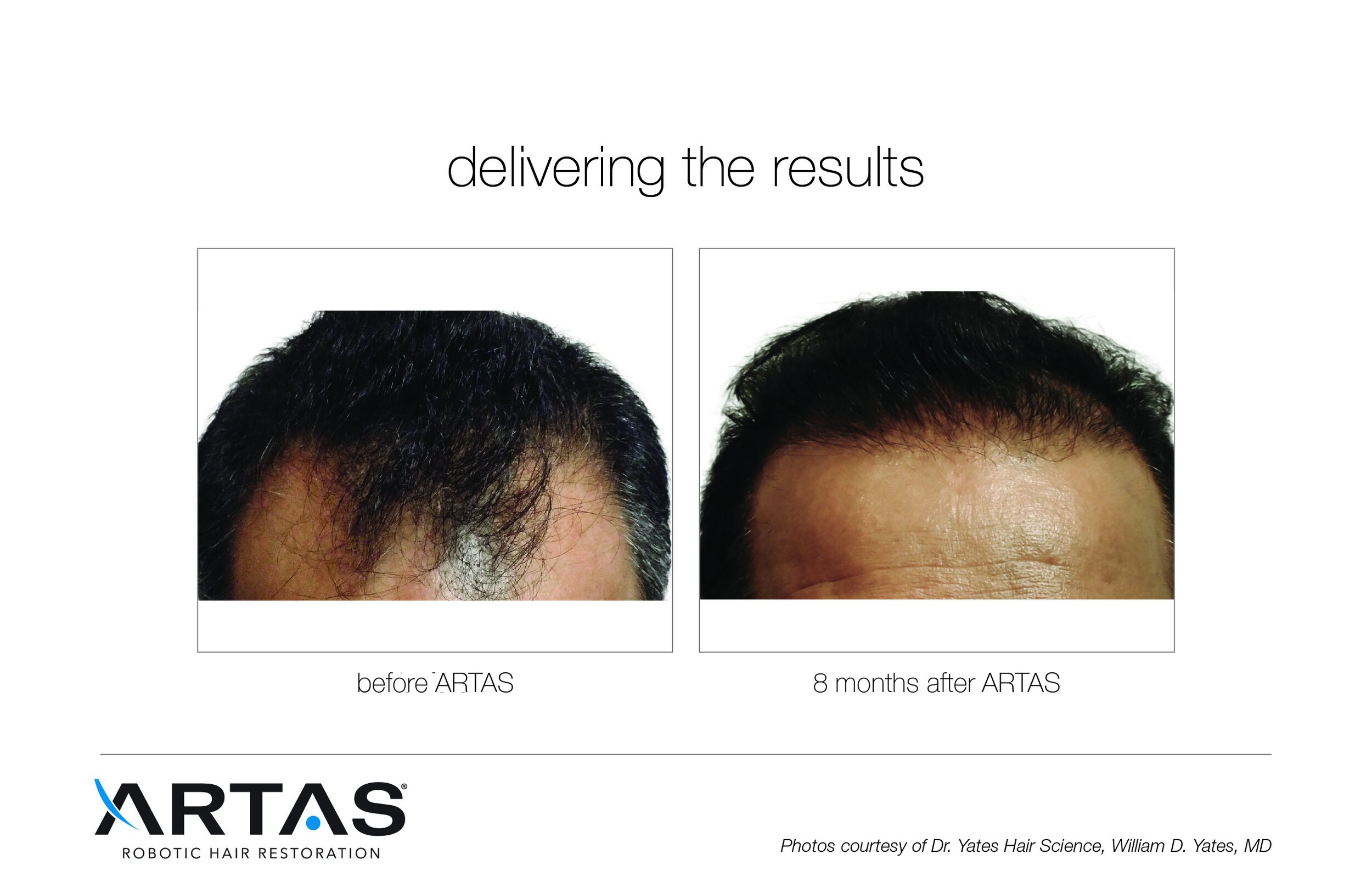
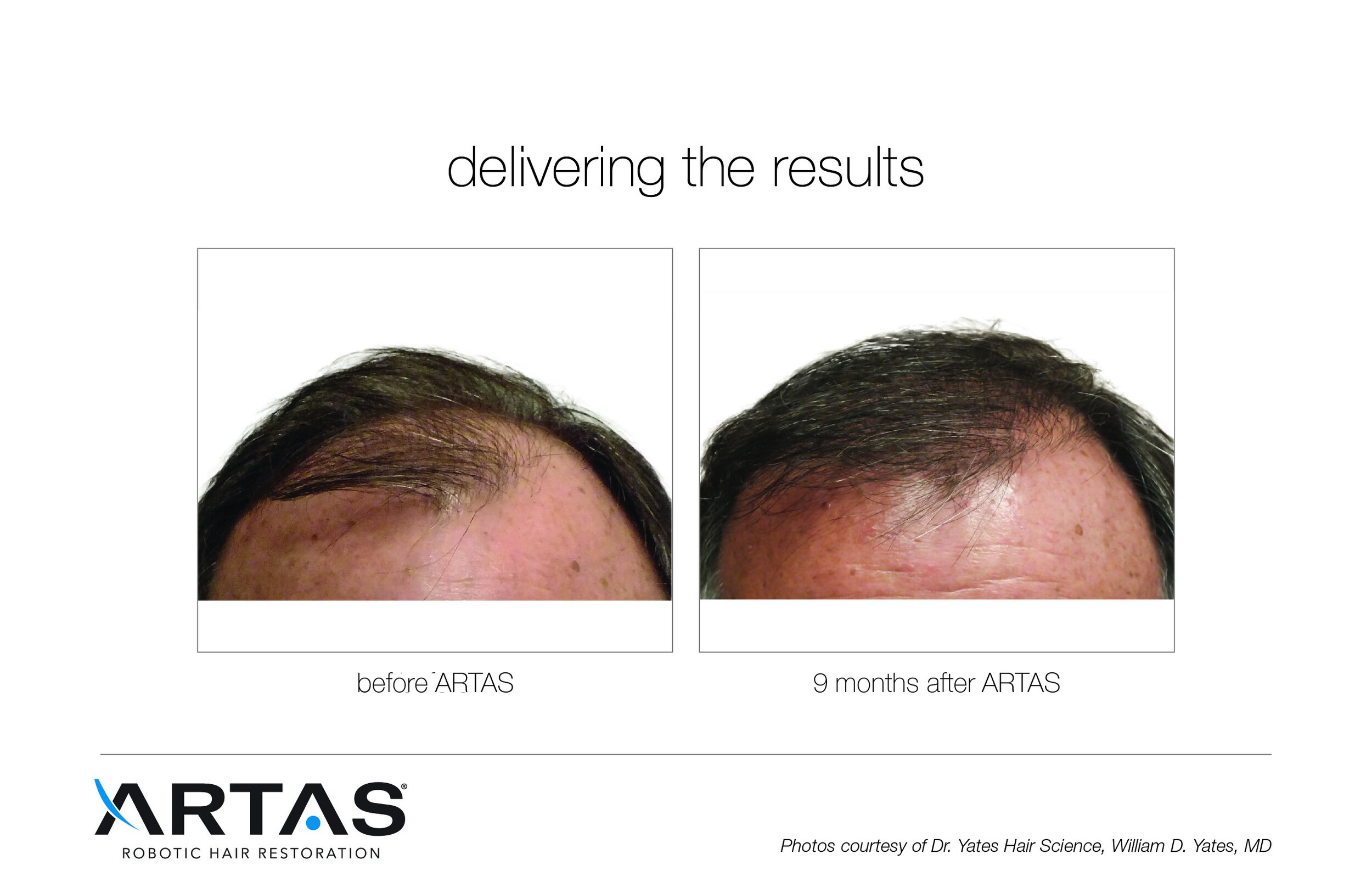
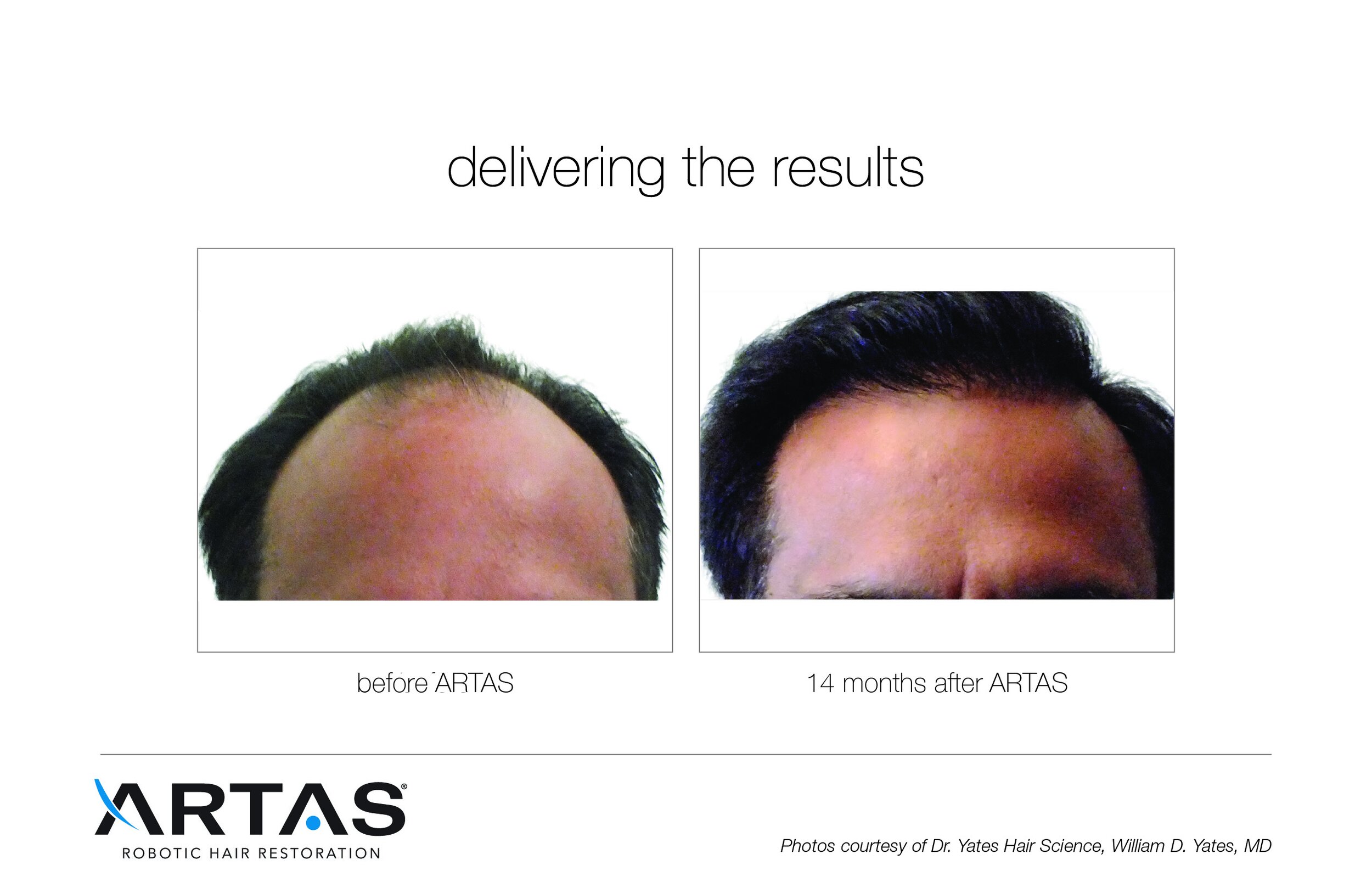

ARTAS® Hair Studio™ software allows your provider to create a 3D-like image from five photographs, allowing us to show you what you would look like with different amounts of grafts placed.
ARTAS® Hair Studio™ software allows your provider to create a hair design that can be shared with you prior to the procedure. This digital design is then uploaded to the robot. On the top/front of your scalp the robot will make different densities of needle slits in which grafts are placed, allowing greater precision and appropriate density of hair in different areas of your scalp.
ALTERNATIVES
Strip harvesting technique
Follicular Unit Extraction (FUE) technique performed manually
HOW DOES IT WORK?
Targeting Follicular Units: The medical staff sees a magnified stereo-view of the scalp. The software digitizes this view. Complex imaging algorithms compute angles, orientation, location of follicular units on the scalp as well as follicular unit type (1,2,3) – this is the basis for accurate targeting. Additionally, stereoscopic video images guide the movement of the needle mechanism and robotic arm. This function is known as visual serving.
Two punches, an inner and outer, arranged concentrically: The inner punch is sharp and has a 1mm internal diameter castellated edge that makes a shallow incision in the skin of 1-3mm. The outer punch is blunt, with an internal diameter of 1.37mm. The Outer punch enters the scalp through the incision made by the inner punch. It spins or oscillates into the scalp while bluntly dissecting 7-8mm into the skin around the follicle. Donor area hair is cropped to 1mm length. Lidocaine is injected into the skin of the scalp to numb the area. Tension is applied to scalp using a specially designed retractor. Patient is in the semi-prone position in our specialized chair. Camera system scans the patient’s scalp and identifies groups of 1-3 hairs (follicular units, FUs). System automatically targets FUs for harvesting based on medical staff input. The process is semi-automated: it can automatically target 5, 10, 15, or more follicular units sequentially; additionally, the system periodically prompts the medical staff user for input.
The ARTAS Hair Studio Technology is a Powerful Tool Integral to the Patient Consultation Experience
INTRODUCTION
The three primary objectives of a consultation and pre-operative planning are first to establish a rapport with the prospective patient, second to educate him about the nature of hair loss as well as the benefits and limitations of hair transplantation, and finally, to evaluate their individual situation to determine a specific and personalized hair restoration plan.
Proper assessment of patient expectations before surgery is performed is a vital part of this consultative process. One cannot have satisfied patients without meeting their expectations. To meet the patient’s expectations, a physician needs to do the following: Assess a patient’s initial expectations; determine the potential achievable aesthetic results for this specific patient; inform the patient about realistic expectations.
Current techniques for consulting with the patients involve drawing the hairline design with surgical pens and having patients imagine what they may look like after hair transplantation. Physicians attempt to describe to patients what coverage and aesthetic outcome they may achieve with different hair transplant sessions sizes (e.g. 1500 grafts, 2000 grafts, 3000 grafts) by showing the patient photos of other patients “like them” who underwent a similar procedure. Unfortunately, these methods fall short of answering a fundamental question patients have when making this important and life-changing decision: “what will I look like after a hair transplantation.”
At Montana Hair Restoration, we have adopted the ARTAS Hair Studio (AHS) technology as an integral part of the patient experience. The AHS is a powerful tool that helps customize the consultation for a specific patient and set realistic expectations.

